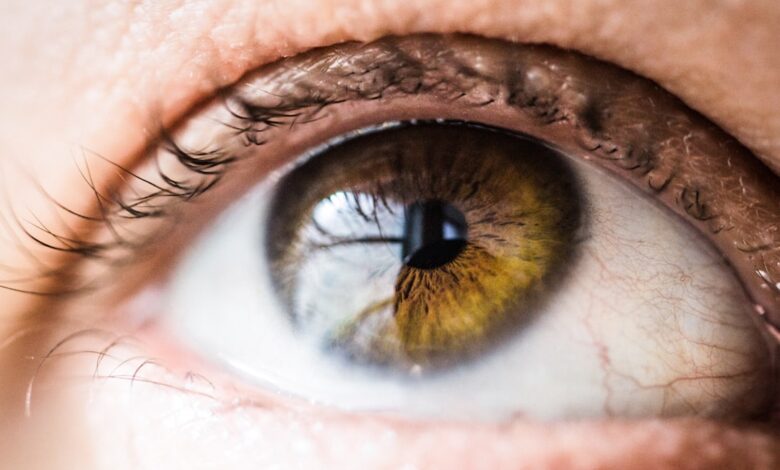Best Preservative-Free Artificial Tears After Lasik

So, you’ve had LASIK! Congratulations on taking the plunge to better vision. One of the most common side effects after LASIK is dry eye. Your eyes might feel gritty, scratchy, or just plain uncomfortable. That’s where artificial tears come in. But with so many options, how do you choose the best, especially when you’re looking for preservative-free drops?
As someone who’s navigated the post-LASIK dry eye landscape, I understand the importance of finding the right artificial tears. Preservatives, while extending shelf life, can sometimes irritate sensitive eyes, particularly after surgery. Let’s dive into what makes preservative-free artificial tears a good choice and explore some top options.
Why Preservative-Free Artificial Tears After LASIK?
After LASIK, your eyes are healing, and the surface of your cornea (the clear front part of your eye) can be more sensitive than usual. Preservatives in some eye drops, like benzalkonium chloride (BAK), can irritate the cornea, leading to inflammation and discomfort. This is especially true if you’re using artificial tears frequently, as you likely will be in the weeks and months following your procedure. Preservative-free artificial tears come in single-use vials or bottles with special dispensing systems that keep the solution sterile without preservatives. This reduces the risk of irritation and makes them a gentler option for your healing eyes.
Think of it like this: imagine putting lotion on a sunburn. You’d want something gentle and soothing, not something with harsh chemicals that could sting. Preservative-free tears are the gentle, soothing lotion for your post-LASIK eyes.
What to Look for in Preservative-Free Artificial Tears
When choosing preservative-free artificial tears, consider these factors:
* Ingredients: Look for ingredients that help lubricate and hydrate the eye. Common ingredients include carboxymethylcellulose (CMC), hyaluronic acid (HA), and polyethylene glycol (PEG). Hyaluronic acid is particularly good at retaining moisture.
* Viscosity: Some artificial tears are thicker (higher viscosity) than others. Thicker drops can provide longer-lasting relief, but they may also cause temporary blurry vision. Start with a lower viscosity option and see how your eyes feel. Your doctor can recommend a higher viscosity drop if needed.
* Delivery Method: Preservative-free drops usually come in single-use vials or multi-dose bottles with a special filter to keep the solution sterile. Single-use vials are convenient for travel and ensure each dose is completely sterile. Multi-dose bottles are more environmentally friendly and cost-effective, but you need to be careful not to touch the tip of the bottle to your eye or any other surface.
* Doctor’s Recommendation: Always follow your doctor’s specific instructions and recommendations for artificial tears after LASIK. They know your individual needs and can guide you toward the best option.
Popular Preservative-Free Artificial Tear Options
While I can’t give specific medical advice, here are some commonly recommended preservative-free artificial tear brands. It’s best to discuss these with your eye doctor:
* Systane Preservative-Free: Systane offers several preservative-free options, including Systane Ultra and Systane Hydration. These are widely available and often recommended by doctors.
* Refresh Preservative-Free: Refresh is another popular brand with various preservative-free formulas, such as Refresh Relieva and Refresh Optive Mega-3.
* Blink Tears Preservative-Free: Blink offers preservative-free options designed to mimic natural tears and provide soothing relief.
* Hylo Tears: Hylo Tears contain sodium hyaluronate and utilize a unique delivery system to maintain sterility without preservatives.
* TheraTears Preservative Free: These drops are designed to restore the natural balance of your tears.
Remember to read the labels carefully and follow the instructions for each product.
Tips for Using Artificial Tears After LASIK
Here are a few tips to maximize the benefits of artificial tears and minimize discomfort:
* Use frequently: Don’t wait until your eyes feel dry. Use artificial tears regularly, even if you don’t feel any symptoms. Your doctor will likely recommend a specific frequency.
* Use before and after activities that dry your eyes: Activities like reading, using a computer, or being in air conditioning can exacerbate dry eye. Use artificial tears before and after these activities.
* Close your eyes for a few seconds after applying: This allows the drops to spread evenly over the surface of your eye.
* Avoid rubbing your eyes: Rubbing can irritate your eyes and delay healing. If you need to relieve itching, use artificial tears instead.
* Consider a humidifier: A humidifier can add moisture to the air, which can help keep your eyes hydrated, especially during sleep.
* Stay hydrated: Drinking plenty of water is essential for overall health and can also help keep your eyes moisturized.
* Follow up with your doctor: Attend all scheduled follow-up appointments with your doctor to monitor your healing and address any concerns.
Are There Any Risks Associated with Preservative-Free Artificial Tears?
Preservative-free artificial tears are generally very safe. The main risk is contamination, especially with multi-dose bottles. That’s why it’s crucial to avoid touching the tip of the bottle to your eye or any other surface. Single-use vials eliminate this risk completely, but they are more expensive and generate more waste. If you experience any irritation, redness, or pain after using artificial tears, stop using them and contact your doctor.
Other Ways to Manage Dry Eye After LASIK
Besides artificial tears, other strategies can help manage dry eye after LASIK:
* Warm compresses: Applying warm compresses to your eyelids can help stimulate tear production.
* Eyelid hygiene: Gently cleaning your eyelids with a mild cleanser can remove debris and oil that can contribute to dry eye.
* Punctal plugs: These small devices are inserted into your tear ducts to block drainage and keep more tears on the surface of your eye.
* Prescription eye drops: Your doctor may prescribe eye drops like Restasis or Xiidra to help increase tear production.
Frequently Asked Questions
How long will I need to use artificial tears after LASIK?
The duration varies from person to person. Some people only need artificial tears for a few weeks, while others may need them for several months. Your doctor will monitor your progress and advise you on how long to continue using them.
Can I use artificial tears too often?
With preservative-free artificial tears, it’s generally safe to use them as often as needed. However, if you feel like you’re constantly needing them, talk to your doctor, as it could indicate a more significant dry eye issue.
Are all preservative-free artificial tears the same?
No, different brands and formulations contain different ingredients and have varying viscosities. What works best for one person may not work best for another. It may take some trial and error to find the right product for you.
Can I wear contact lenses while using artificial tears?
This depends on the type of contact lenses and the artificial tears. Some artificial tears are specifically designed for contact lens wearers. Check the product label or ask your doctor for guidance.
Finding the right preservative-free artificial tears after LASIK is a crucial step in ensuring a comfortable and successful recovery. Remember to consult with your eye doctor for personalized recommendations and to address any concerns you may have. By being proactive and taking good care of your eyes, you can enjoy the benefits of improved vision with minimal discomfort.
Related Posts
| Best Preservative-Free Artificial Tears |
| Best Preservative Free Eye Drops After Lasik |



